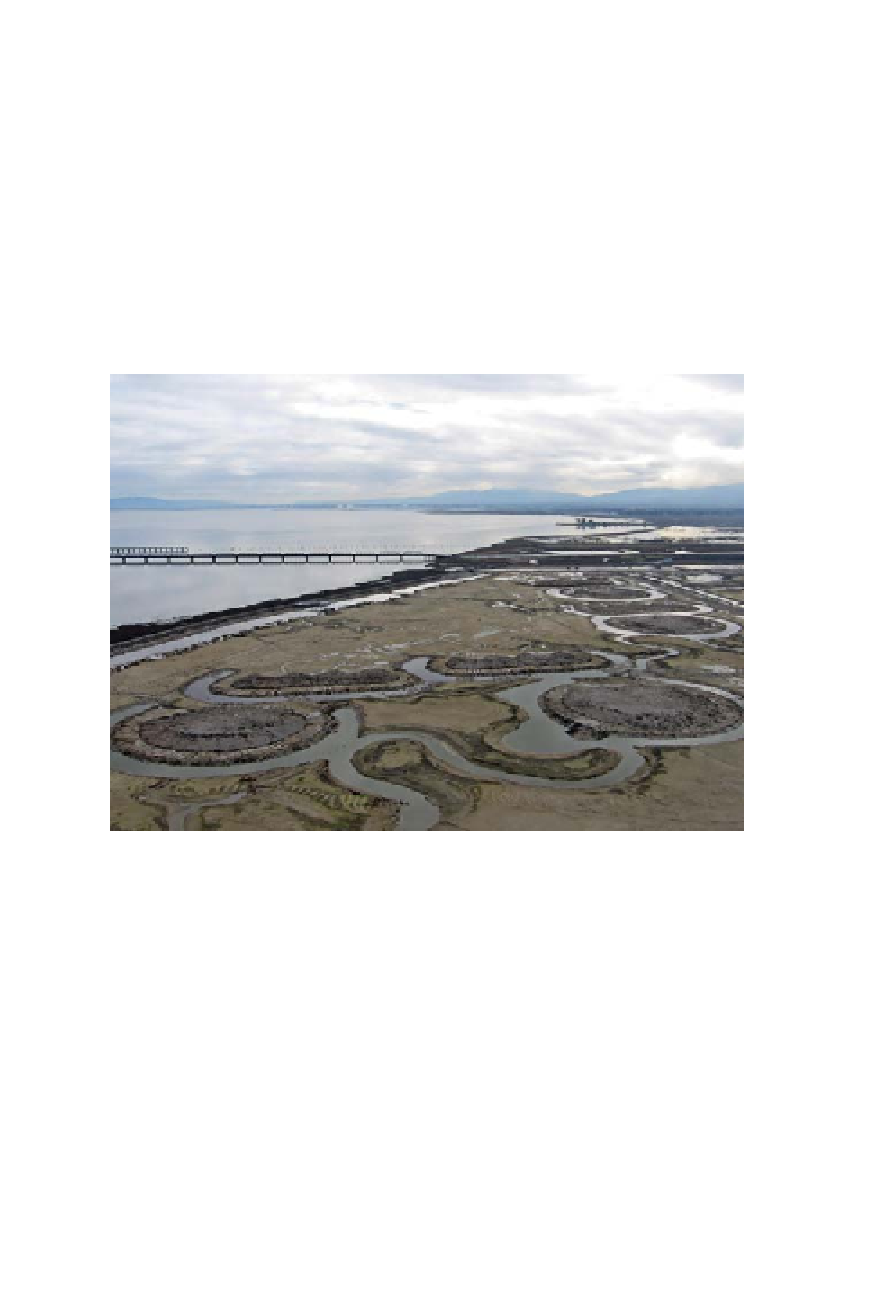Biology Reference
In-Depth Information
grand view of long-legged and web-footed birds foraging and paddling in
a 240-acre pond and resting on 30 new islands. Some of these islands are
designed to go green, offering vegetative cover, whereas others offer se-
cluded mini-mudflats. Doing such delicate habitat construction in mud
with a giant bulldozer—each island is no more than a gently sloped mound
a couple of feet high—can be difficult, says Orr. But these “managed”
ponds are attempts to squeeze as many shorebirds into as little space as
possible. They provide more amenities per square foot of wet space than
the salt ponds currently offer.
Bird island habitats created in Ravenswood pond (known as SF2 and also pictured
on p. 237 post-breach) as part of the South Bay restoration project. Old railroad
bridge and water pipelines from Hetch Hetchy reservoir to San Francisco appear in
background. (Melisa Helton, courtesy of the U.S. Fish and Wildlife Service)
This 240-acre pond on the western shore of the bay, in the Ravenswood
area east of Menlo Park, is one of several spots undergoing Phase I changes
over the next few years. Others are on the bay's eastern shore at Eden
Landing, and on the far southern shore around the old fishing town of
Alviso (see Map 16, p. 263).
At Eden Landing, just south of the San Mateo Bridge, restoration man-
agers have divided two ponds into seven small compartments, each of dif-
ferent salinities. Biologists want to know which salinity birds favor most,
and the Eden Landing experiment should produce clues for future phases
of restoration. The seven small ponds run much like a salt-production fa-
cility, gradually evaporating of more and more water but stopping short of
the final crystallization phase. Orr's team had to come up with some con-

